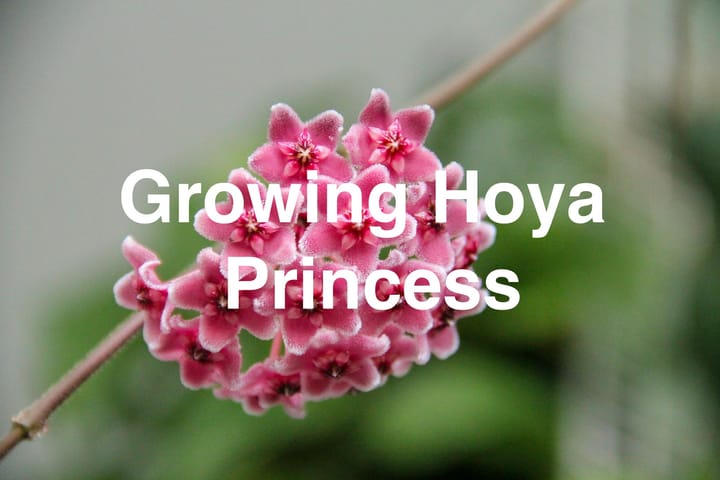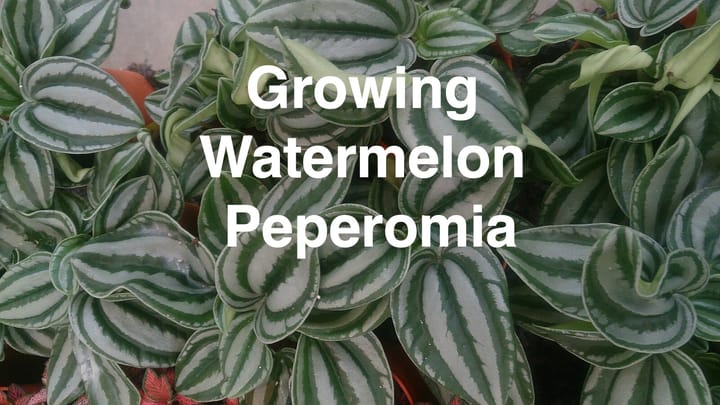How to Grow Philodendron Birkin
Cultivating the alluring Philodendron Birkin adds a touch of the tropics to your indoor plant collection. This houseplant is celebrated for its striking foliage marked with distinctive white or cream variegation, making it a captivating addition to any room.
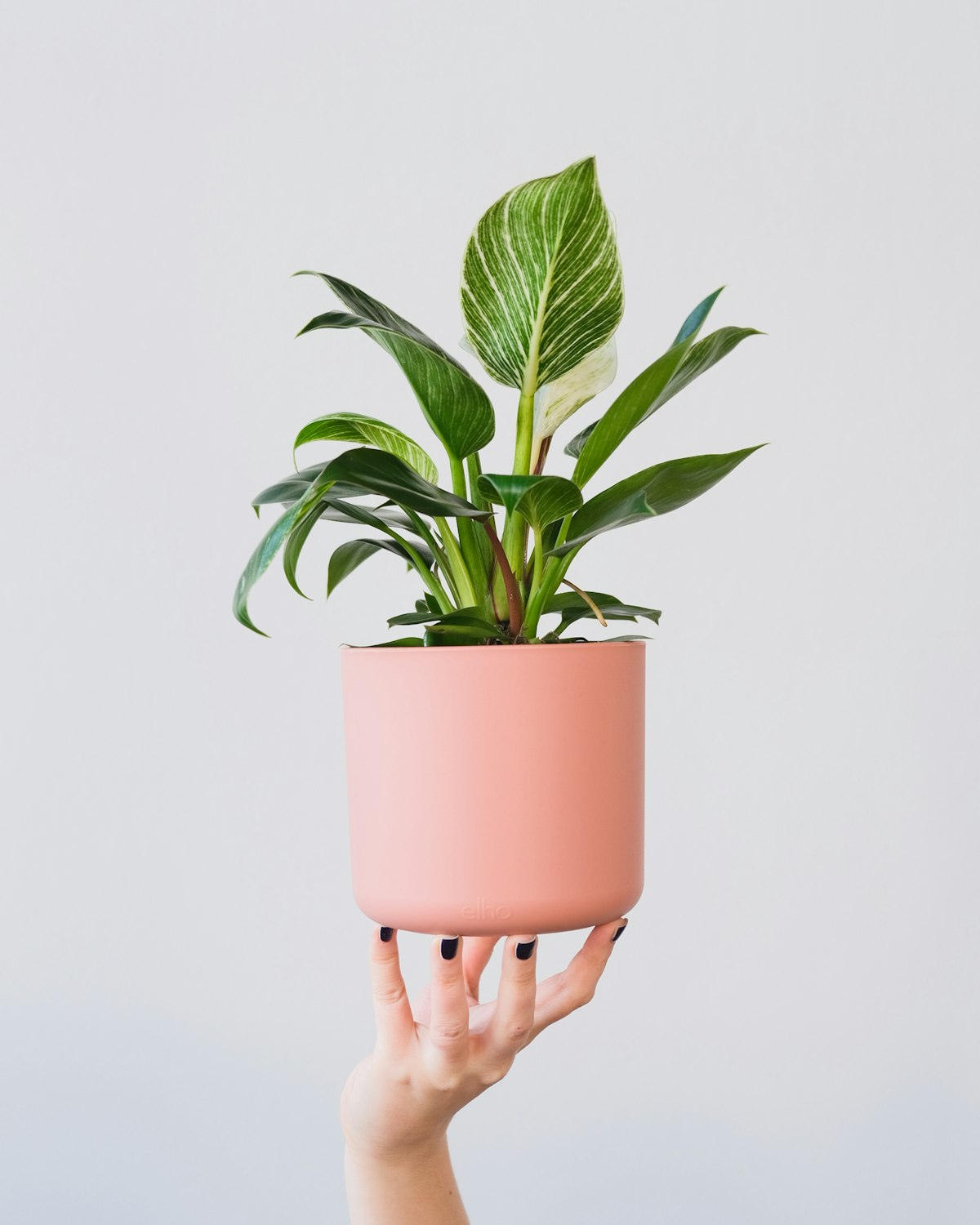
Despite its tropical origins and unique appearance, the Philodendron Birkin is not a high-maintenance plant – it brings the vibrancy of the rainforest to your home with relative ease.
To ensure your Philodendron Birkin thrives, it's important to replicate its native humid, warm environment to some extent.
This means placing your Birkin in a setting that receives bright, indirect light and maintaining a consistent indoor temperature that mirrors the balmy conditions of the tropics.
Appropriate care, including proper watering, lighting, and feeding balance, will keep your plant healthy and encourage the growth of its eye-catching variegated leaves.
Key Takeaways
- Philodendron Birkin is a tropical houseplant known for its variegated leaves.
- It thrives in bright, indirect light and a warm, humid environment.
- Regular care, involving balanced watering and fertilizing, supports its health and growth.
Choosing the Right Environment
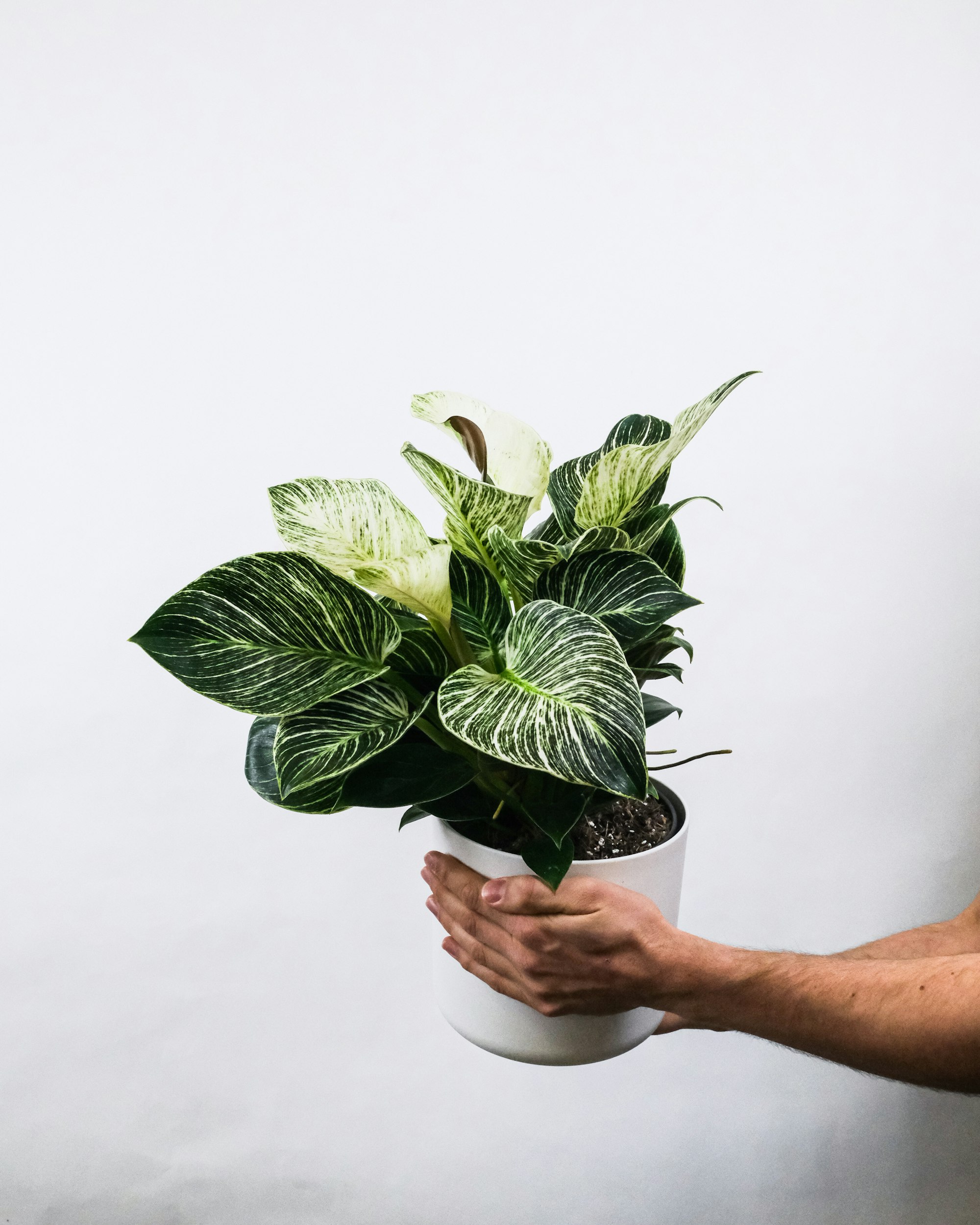
To ensure your Philodendron Birkin thrives, it's crucial to establish an environment that mimics its native tropical habitat.
This means balancing light and warmth while maintaining the proper humidity around your plant.
Light and Location
Your Philodendron Birkin prefers light that's bright yet indirect. Avoid direct sunlight, as it can burn the leaves of your delicate plant.
An east-facing window is ideal, providing the gentle morning rays that this tropical plant loves.
If placed in too much shade, it might not grow as well, so aim for a spot where it can bask in a reasonable amount of indirect light throughout the day.
Temperature and Humidity
Philodendron Birkins are sensitive to the cold and flourish in a consistently warm and humid environment.
An ideal temperature range is between 60-85°F (15-29°C). If the temperature drops below 60°F, growth can stall.
Keep the humidity levels up around your Philodendron Birkin, striving for a range between 40-70%.
Using a humidifier can help achieve this, especially during dry winter months or in drier climates.
Regularly check the humidity and temperature, ensuring they remain consistent to support your plant's health.
Planting and Soil Requirements
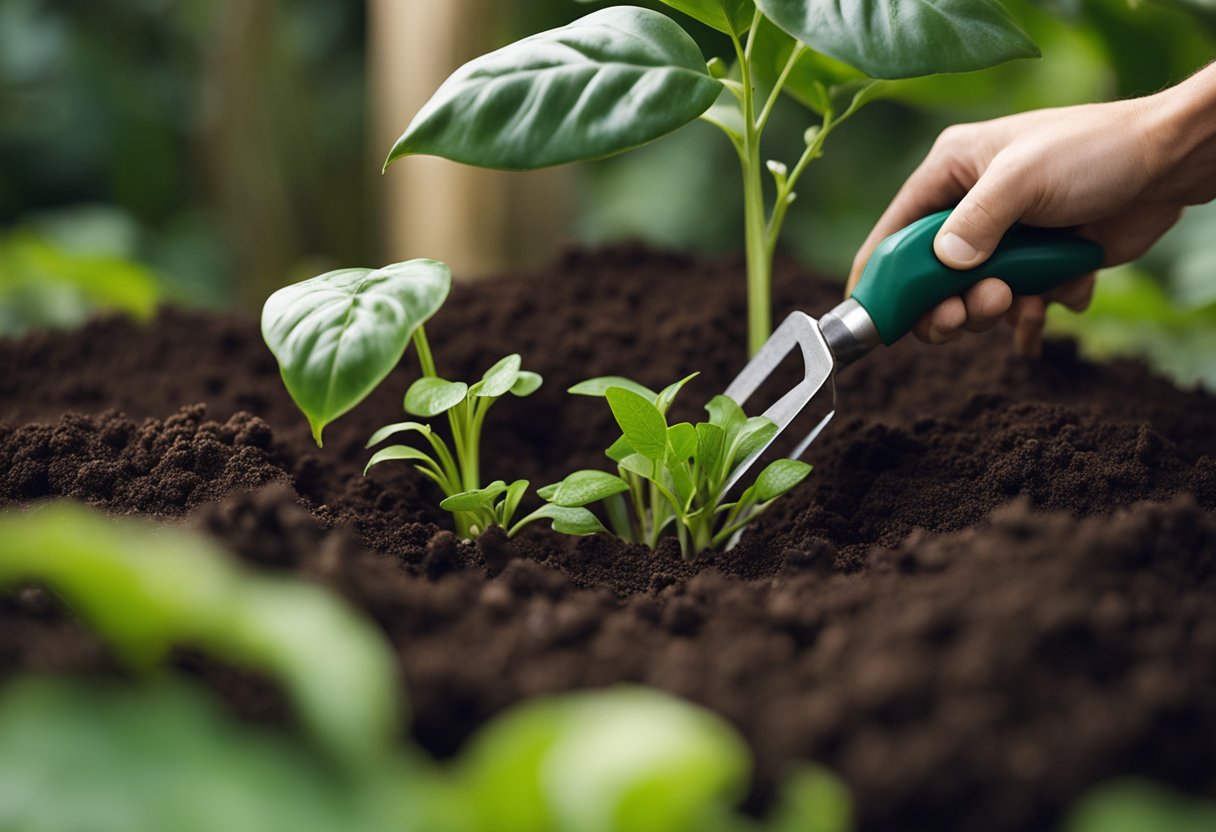
To ensure your Philodendron Birkin thrives, it's essential to start with the right foundation. Adequate potting mix and a well-designed pot are crucial for healthy growth and moisture management.
Potting Mix Composition
Your Philodendron Birkin's growth is heavily reliant on the potting mix composition.

Aim for a well-draining, airy mix that can retain some moisture without becoming soggy.
An ideal potting mix for Philodendron Birkin is one part peat, one part perlite, and a generous amount of orchid bark or an aroid mix. This combination ensures the following:
- Peat helps to retain the necessary moisture,
- Perlite allows for proper aeration and
- Orchid bark keeps the mix loose, aiding drainage and preventing root rot.
Mix these components evenly to provide a consistent environment for your plant's roots.
Pot Size and Drainage
Pot selection is more than just about aesthetics; it's about functionality. When potting your Philodendron Birkin, choose a pot slightly larger than the root ball.
This will encourage the roots to fill in without leaving excessive soil to hold moisture and potentially cause root issues. Here are some guidelines:
- Ensure your pot has drainage holes at the bottom. This is non-negotiable as it allows excess water to escape.
- Consider the material of the pot. Terracotta or other porous materials can help wick away excess moisture.
Remember: While it's important to fertilize for growth, only during the growing season, spring through summer, using a balanced liquid fertilizer once a month. Avoid over-fertilization as it can harm the plant more than benefit it.
Watering and Fertilizing Strategies
In caring for your Philodendron Birkin, understanding the balance of watering and fertilizing can significantly impact its health and vigor.
Let’s ensure you have the best practices to nurture its growth.

Watering Schedule and Techniques
Your Philodendron Birkin thrives on a consistent watering schedule. Aim for moist soil; however, allow the top 2-3 inches of soil to dry out before watering again to prevent root rot.
Overwatering can also lead to yellow leaves, a common sign of distress in your plant.
- Frequency: Water roughly once per week.
- Seasonal Adjustments: Less frequent watering is required during colder seasons—approximately every ten days.
- Technique: Use lukewarm water and water evenly, ensuring it reaches the entire root system.
Fertilizer Types and Application
Fertilize your Philodendron Birkin to promote healthy growth; a balanced, water-soluble fertilizer works best.
- Fertilizing Schedule:
- Spring and Summer: Fertilize bi-weekly during these peak growth periods.
- Autumn and Winter: Reduce to once a month as the plant's growth slows.
- How to Apply:
- Dilute the fertilizer to half the recommended strength.
- Apply directly to the soil around the plant, avoiding direct contact with the leaves.

By carefully monitoring the moisture level and judicious fertilizer use, you'll create an ideal environment for your Philodendron Birkin to flourish.
Maintaining Plant Health
To ensure your Philodendron Birkin thrives, regular upkeep through pruning and inspection for pests and diseases is essential.
Paying attention to these aspects helps maintain the beauty and health of your plant.

Pruning and Cleaning
Pruning your Philodendron Birkin is crucial to keep it looking its best. Prune any yellow leaves you notice, as these could be signs of poor health or old age.
When pruning, use sterilized scissors or shears to make clean cuts without damaging the foliage.
This encourages new growth and maintains the plant's beautiful variegation.
After pruning, clean the remaining leaves with a damp cloth to remove dust and enhance their glossy look.
Pest and Disease Management
Your Philodendron Birkin may occasionally encounter pests such as aphids, mealybugs, or spider mites.
Regularly inspect the leaves for any signs of these pests. A natural remedy like neem oil can be effective in managing them.
Following the manufacturer’s instructions, use it as a spray to deter pests.
Additionally, be on the lookout for common diseases like root rot, which can be prevented by ensuring proper drainage during repotting.
If your plant does become infected, isolate it to prevent the spread to other plants and treat it accordingly.

Propagation and Repotting
Effectively propagating and repotting your Philodendron Birkin can ensure its continued growth and prevent common issues such as root rot.
When done correctly, these procedures allow your plant to thrive in its environment.
Philodendron Birkin Propagation Techniques
When you propagate your Philodendron Birkin, stem cuttings are your best option.
Select a healthy section of the stem that includes at least one leaf and an aerial root or node. Here's how to do it:
- Cut: Use a sharp blade to make a clean cut below a node.
- Root: Place the cutting into water or moist potting soil, ensuring the cut is submerged.
- Wait: Roots should begin to form within a few weeks.
- Plant: Place the cutting into fresh potting soil once the roots are a few inches long.

When and How to Repot
Repotting is crucial to accommodate your plant's growth and to refresh the potting soil, which degrades over time.
If you notice the roots are crowded, or your plant isn't growing as it should, it might be time to repot. Follow these steps:
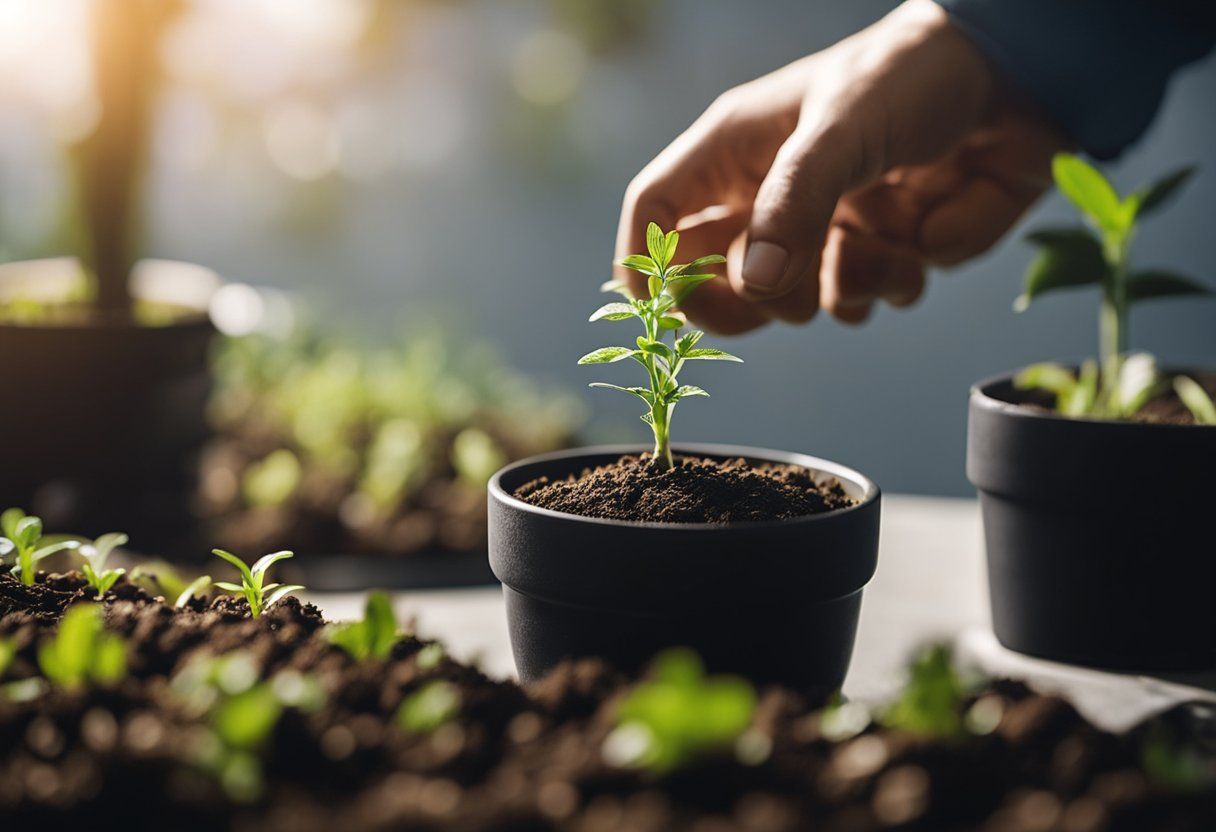
- Prepare: Choose a new pot that's 1-2 inches larger in diameter than the current one.
- Remove: Carefully remove your Philodendron Birkin from its current pot, gently loosening the root ball if it's dense.
- Inspect: Examine the roots for signs of rot and trim if necessary.
- Pot: Fill the bottom of the new pot with fresh potting soil, place the root ball in, and fill around it with more soil, pressing down lightly to eliminate air pockets.
- Water: Wait a day before watering to let any disturbed roots heal.
Frequently Asked Questions
Growing a Philodendron Birkin can raise questions, especially regarding its care requirements and growth characteristics. Below are answers to some of the most common inquiries to help nurture your plant effectively.
What are the optimal lighting conditions for growing a healthy Philodendron Birkin?
Your Philodendron Birkin prefers bright, indirect sunlight. Although it can adapt to lower light areas, providing ample indirect light will ensure the best growth and leaf coloration.
What steps can I take to promote bushier growth in my Philodendron Birkin?
Regular pruning of leggy stems is beneficial to encourage your Philodendron Birkin to become bushier.
This stimulates new growth and can lead to a fuller plant. Also, ensuring adequate light and proper fertilization will support robust growth.
How can I support aerial root development in Philodendron Birkin plants?
If your Philodendron Birkin develops aerial roots, you can support them by keeping the humidity high or allowing the roots to grow into a moist medium like sphagnum moss, which may encourage further development.
Can Philodendron Birkin be considered an easy plant for beginners to grow?
Yes, Philodendron Birkin is considered easy to grow and suitable for beginners due to its adaptable nature and low maintenance requirements.
It's forgiving and thrives with minimal care, making it a popular choice for novice gardeners.
How tall can a Philodendron Birkin get, and how can I manage its height?
A Philodendron Birkin can reach up to 3 feet in height. To manage its size, you can prune it back periodically, especially if it starts to outgrow your desired space. This trimming can also help maintain a more structured appearance.
Does the Philodendron Birkin have any specific benefits that I should know about?
Philodendron Birkin, like many houseplants, can contribute to an improvement in air quality by filtering out certain air pollutants. Its striking foliage also has a calming effect, creating a more relaxing home environment.

